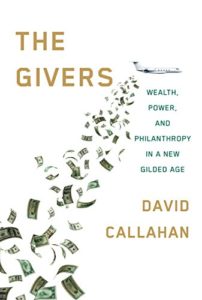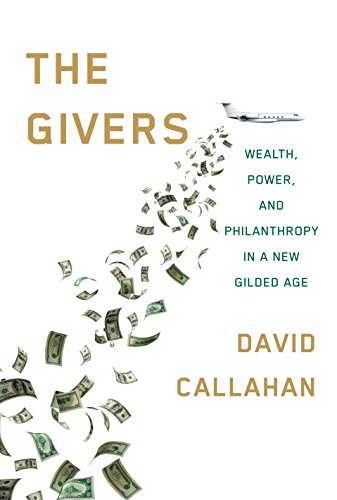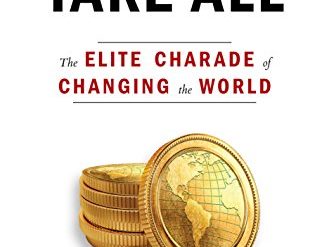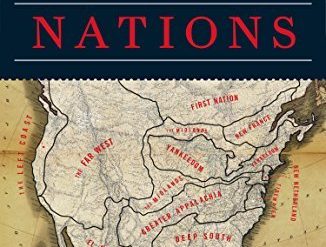
Few Americans appreciate the extraordinary scope and depth of philanthropy in our country. In 2015, the most recent year for which reliable estimates were available at this writing, Americans contributed a total of $373 billion to what is loosely called “charity.” That amounts to 2% of the nation’s GDP of just under $18 trillion that year—a proportion that has remained steady for at least seven decades.
Estimated reading time: 9 minutes
Where does all the money come from?
Although most people imagine that the lion’s share of this money comes from charitable foundations and corporations, the reality is different. Combined, institutional sources accounted for just 21%. Living individual donors kicked in 71%, or nearly $265 billion. 90% of US households contribute on an annual basis; their total contributions average about $1,500 per household. In other words, the six, seven, and eight-figure gifts that are associated with philanthropy in the popular imagination represent only a fraction of the country’s total giving. That slice of the charitable pie is the subject of David Callahan’s heavily researched new book, The Givers: Wealth, Power, and Philanthropy in a New Gilded Age. Callahan goes out of his way to note that contributions by mega-donors “constitute less than a quarter of all annual charitable giving.”
The Givers: Wealth, Power, and Philanthropy in a New Gilded Age by David Callahan (2017) 352 pages ★★★★☆
Who are the mega-donors?
Callahan’s focus is a tiny fraction of 1% of the American population, mostly the increasing number of philanthropists among the nation’s more than 500 billionaires. His thesis is straightforward: “we face a future in which private donors—who are accountable to no one—may often wield more influence than elected public officials, who (in theory, at least, anyway) are accountable to all of us. This power shift is one of the biggest stories of our time.” However, Callahan’s study deals only with living individual major donors and, in some cases, the foundations they’ve established as vehicles for their giving.
By “major donors,” he refers principally to gifts of eight or nine figures (tens or hundreds of millions of dollars). Callahan perceives a big risk in that the power that accrues to these mega-donors “will further push ordinary Americans to the margins of civic life in an unequal era when so many people already feel shoved aside by elites and the wealthy.” Pointing to the tens of trillions of dollars that will change hands from Baby Boomers to their descendants in the coming years, Callahan writes, “For all the philanthropy we’ve seen in recent years, it’s nothing compared to what lies ahead.”
Much of the money for philanthropy comes from high-tech or finance
Many of the men and women Callahan profiles in detail have earned their money in either high-tech or finance. These fields account for most of the new wave of philanthropists that has emerged in the last two decades. And there is no reason to believe that either Silicon Valley or Wall Street will suddenly stop producing prodigious wealth in the years ahead.
The mega-donors profiled by Callahan lack diversity to a surprising degree. Not only are they “almost entirely white,” a disproportionate number of the givers are Jewish, practically no Latino names appeared, and I didn’t encounter a single Chinese or Indian name in the book.
Are mega-donors all “conservative?”
The author cites a few statistics about economic inequality in passing, but The Givers is no left-wing screed against what Theodore Roosevelt termed “malefactors of great wealth.” Callahan’s treatment of the billionaires and multimillionaires whose giving he cites in his book is even-handed. Though I’m sure critics on the Right will object to his thesis, they will discover it’s difficult to find fault with his many detailed descriptions of the mega-donors and their philanthropic practices. He is careful to balance every account of attempts by Right-Wing donors such as the Koch Brothers to sway public policy or change the terms of debate with similar efforts by George Soros and other liberals.
However, what Callahan makes clear is that libertarians and so-called conservatives have lavished far more money, and far more effectively, on their pet causes and institutions than have those who oppose them on the Left—and they’ve been doing it for many decades longer. It also becomes clear in The Givers that not all mega-donors can be pigeonholed as either liberal or conservative—in fact, a great many of them straddle the ideological divide, to judge from the pattern of their giving.
Will mega-donors run out of money?
Callahan makes abundantly clear what any large donor would be likely to say: it’s difficult to give away large sums of money. “Take Bill Gates and Warren Buffett,” he notes. Despite the billions of dollars both men have funneled into philanthropic projects, “both have gotten much richer over the past decade. Buffett added $25 billion to his fortune between 2005 and 2015. Gates added even more, pushing his net worth to nearly $80 billion. [It’s closer to $90 billion now.] And these fortunes may rise even further” as their shares in Microsoft and Berkshire-Hathaway continue to rise in value and their other investments yield additional returns.
Gates and Buffett are by no means alone: “Larry Ellison added $40 billion to his wealth between 2005 and 2015, Jeff Bezos added $42 billion,” and so forth. In fact, nearly every one of the billionaires Callahan profiles in The Givers has grown richer even while giving away staggering sums of money.
Bill and Melinda Gates have stipulated that their foundation is to give away all its assets in the 20 years following their deaths. But how could anyone possibly distribute with any pretense of judiciousness in just 20 years the estimated minimum of $150 billion the Gates Foundation will then be worth? (That figure includes the Foundation’s $39 billion, Gates’ $87 billion, and the $30 billion pledged by Warren Buffett.) Ask anyone who works in the field of philanthropy: it is not reasonable to expect that any foundation staff, no matter how gifted and efficient, could give away that much money in so short a time. The Foundation now grants just $4 billion annually. Perhaps they’ll decide to buy a small country or two.
Is philanthropy good for America?
Callahan emphasizes the efforts by many ultra-wealthy donors to influence public policy directly through political contributions and to sway public opinion through lavish support of think tanks such as the Heritage Foundation, the Cato Institute, and the American Enterprise Institute on the Right and the Center for American Progress and the Center on Budget and Policy Priorities on the Left. Both George Soros and the Koch Brothers are well known to be among these donors, but there are dozens of others who contribute enormous sums in similar ways, some of them well known, others who fly under the radar.
Although Callahan scrupulously notes the efforts on both sides of the political divide, he writes that “there’s no denying that wealthy donors are far more likely to align themselves with think tanks that side with corporations and Wall Street in policy fights.” The difference in impact is clear: Heritage, Cato, and AEI dwarf nearly all their liberal counterparts, and they’ve been in business decades longer than the leading progressive think tank, the Center for American Progress, which was established only in 2003.
Concentrating gifts in specific areas
Many of the donors profiled in The Givers have concentrated their contributions in specific areas. In education, many millions of dollars have gone to support charter schools—and the Bill and Melinda Gates Foundation is credited with the adoption of the Common Core, almost single-handedly. In health care, progressive donors played a large role in bringing about the Affordable Care Act (Obamacare), while their counterparts on the Right are bankrolling the effort to repeal it. Callahan cites numerous examples of donors whose intervention into the realm of public policy has been decisive. And other donors have imposed their views on the curriculum at colleges and universities to which they’ve given large gifts.
Is all this good? Callahan wonders whether it is (as do I). While it’s difficult to dispute that there is value in philanthropic contributions to the public welfare, “philanthropy now acts as a driver of the growing divide in America in who gets heard in the public square—along with who sets the agenda—both nationally and locally. Giving by the wealthy is amplifying their voice at the expense of ordinary citizens, complementing other tools of upper-class dominance.”
What is to be done?
In an Epilogue, Callahan offers several recommendations to fix the flaws in America’s philanthropic environment:
- “Given the politicization of nonprofits over the past half century, it’s time to rethink which groups really should qualify for tax-exempt status.” Callahan opts for drawing a sharper distinction between tax-exempt 501(c)(3) and non-tax-exempt 501(c)(4) nonprofits, which would obviously entail reclassifying some that are now exempt from taxes into the latter category. Perhaps those that meddle in politics should be paying taxes.
- “Private foundations already pay a 2 percent federal excise tax on their annual investment income that generates more than $500 million a year in revenue. The tax is supposed to cover the costs of IRS oversight of charities,” but it’s been spent elsewhere since the 1990s. The money should be rededicated to serve the purpose it was intended to serve.
- Callahan also advocates the establishment of “a new U.S. federal office of charitable affairs” which he foresees as a vehicle “to analyze the benefits of charitable giving as well as the sector’s performance.” (Fat chance with a Republican Congress, no?)
- “There is a strong case that foundation boards should, as a norm, include outsiders—as opposed to just being composed of family members or other insiders.” To that I say, Amen.
- Callahan observes, as others have been noting since the 1970s, that “[t]oo many charitable dollars go to elite institutions that mainly cater to the affluent; too few go to alleviating poverty or fighting injustice,” all of which is indisputably true. But Callahan doesn’t see any easy way to remedy this situation.
- In the final analysis, Callahan sees the lack of government resources as a major source of the danger posed by the continuing growth in the influence of the ultra-wealthy through philanthropy. Donors are supplanting government. “One path forward,” he writes, “is reducing tax breaks for mortgages, health insurance, and retirement savings that mainly benefit the affluent.” In the current political environment, this one is just about as likely to be implemented as that new office of charitable affairs.
David Callahan has performed a valuable service by spotlighting the often-hidden role of a small number of extremely wealthy individuals who are using philanthropy to gain more and more say over the destiny of American society.
About the author
David Callahan founded and edits the online magazine Inside Philanthropy in 2013. He had previously co-founded the liberal New York think tank, Demos. The Givers is his ninth book.
For related reading
This is one of the Good books about billionaires.
Like to read books about politics and current affairs? Check out Top 10 nonfiction books about politics.
If you enjoy reading nonfiction in general, you might also enjoy:
- Science explained in 10 excellent popular books
- Great biographies I’ve reviewed: my 10 favorites
- My 10 favorite books about business history
And you can always find my most popular reviews, and the most recent ones, on the Home Page.


























